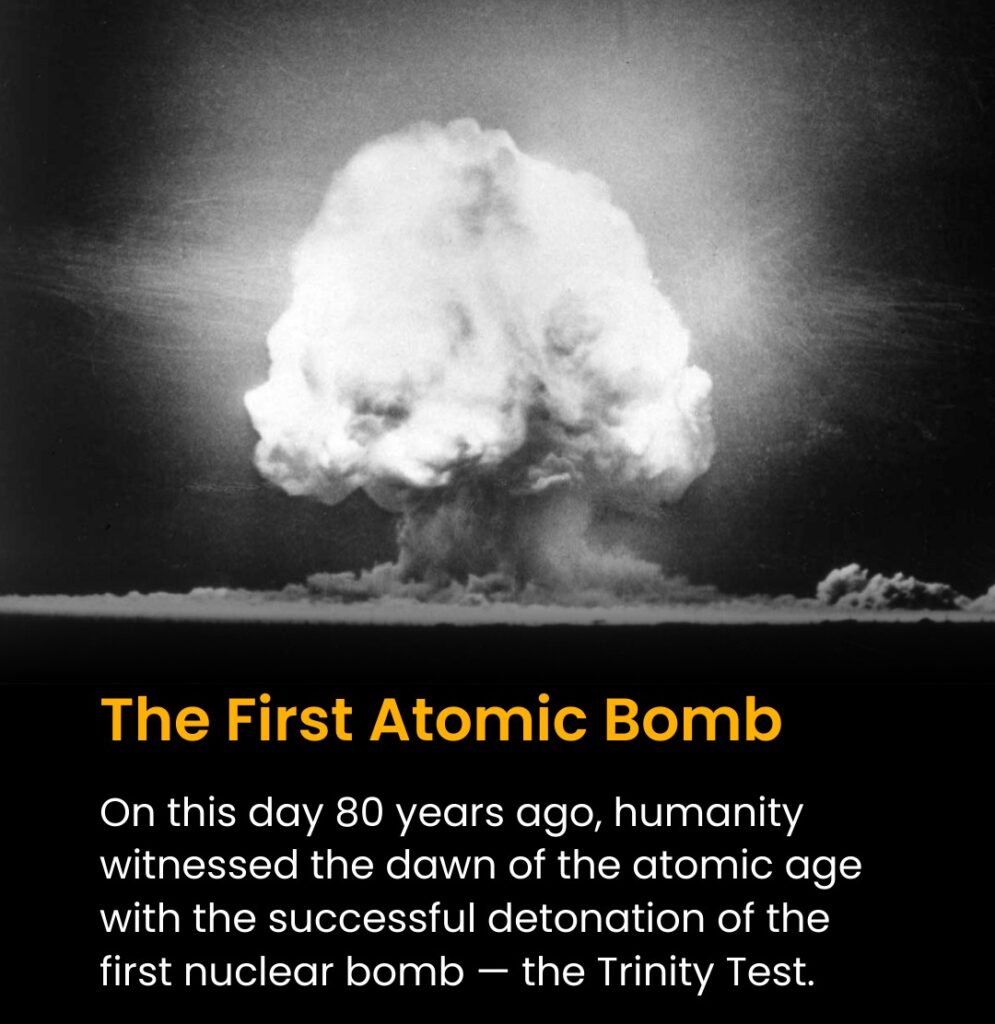The First Atomic Bomb

The bomb, a plutonium implosion device codenamed “Gadget,” was placed atop a 100-foot steel tower. When it detonated, it released a blast equivalent to 20 kilotons of TNT, generating a blinding flash of light visible for over 200 miles and creating a mushroom cloud that rose 7.5 miles into the sky. The explosion produced an intense heat that turned the surrounding desert sand into a mildly radioactive glass-like substance called trinitite.
Key Figures In The Project
Key figures in the project, including physicist J. Robert Oppenheimer, who is often referred to as the “father of the atomic bomb,” were present at the site. As the mushroom cloud rose, Oppenheimer famously recalled a line from the Hindu scripture Bhagavad Gita: “Now I am become Death, the destroyer of worlds.”
The success of the Trinity Test had profound and far-reaching implications. It validated the scientific theories and engineering principles behind nuclear fission, proving that it was possible to unleash the immense energy stored within the atomic nucleus. Just weeks later, this new technology would be used in warfare when the United States dropped atomic bombs on the Japanese cities of Hiroshima and Nagasaki, leading to the end of World War II.
The Trinity Test marked a pivotal moment in history, ushering in an era of nuclear weapons and a new geopolitical landscape defined by the threat of atomic warfare. It also sparked significant ethical and moral debates about the use of such powerful and destructive technology, discussions that continue to this day.
Stephen Hawking Once Joked That The Lack Of Tourists From The Future Proves Time Travel Doesn’t Exist. But Later, He Softened That Stance, Acknowledging That The Laws Of Physics Don’t Forbid It. One Theory Suggests Changing The Past Might Not Affect Your Timeline At All—It Could Create A Parallel Timeline Instead.
